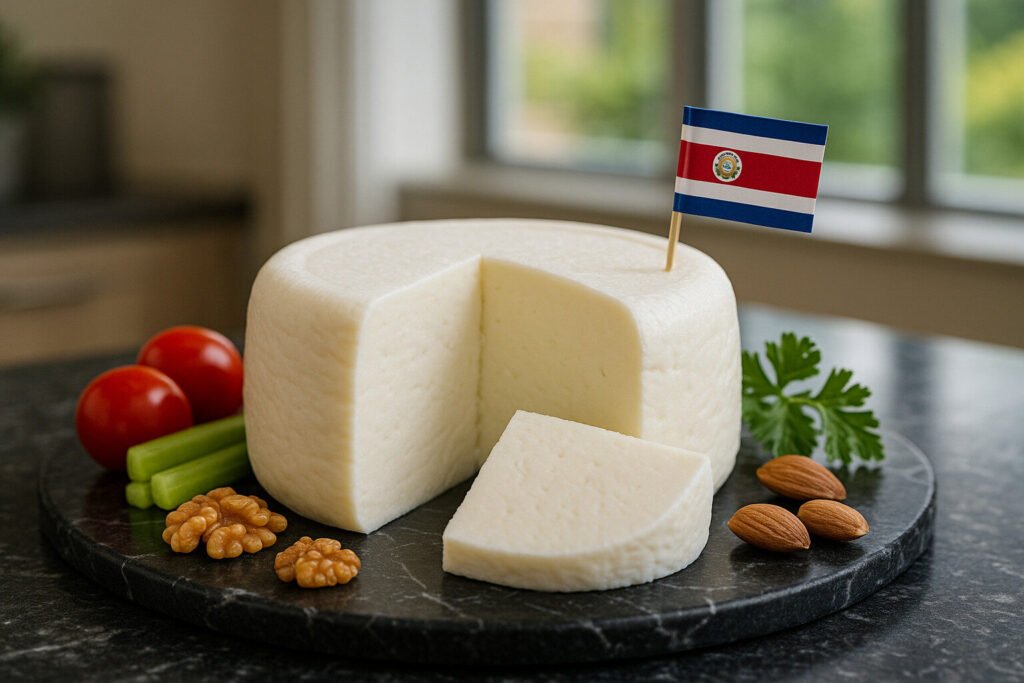Cheese Of Costa Rica
Cheese in Costa Rica
Costa Rican cheese production centers on fresh, soft varieties that are integral to the national diet. These cheeses are typically made from cow’s milk and are consumed shortly after production. The most common styles include queso palmito, queso turrialba, and queso blanco, each with distinct textures and mild flavors.
These cheeses are defined by their high moisture content and minimal aging, usually lasting only a few days. They fall within the broader category of Latin American fresh cheeses, sharing similarities with queso fresco and queso blanco from neighboring countries. Their production methods prioritize simplicity and quick consumption over complex aging processes.
Traditional Production Methods
Costa Rican cheesemaking typically involves pasteurized cow’s milk heated to specific temperatures before adding rennet or acidic coagulants. The curds are gently cut and drained through traditional baskets or molds, which create the characteristic shapes and textures. This process preserves the fresh, milky quality while developing slight acidity.
Many producers maintain artisanal techniques, particularly in regions like Turrialba where protected designation of origin applies. The cheeses are often hand-formed and lightly pressed, then brined or dry-salted before packaging. Production occurs year-round due to Costa Rica’s consistent tropical climate supporting continuous dairy farming.
Sensory Characteristics
Costa Rican cheeses present a mild, slightly salty flavor profile with clean lactic notes. Their textures range from semi-soft and pliable in queso palmito to more crumbly in aged variations. The color is consistently white to off-white, with minimal rind development in fresh varieties.
When heated, these cheeses exhibit excellent melting properties while maintaining structural integrity. They lack the pungent aromas associated with aged European cheeses, instead offering subtle dairy sweetness. The mouthfeel is generally moist and smooth, with some varieties developing slight graininess in older specimens.
Culinary Applications
Costa Rican cheeses serve as essential components in traditional dishes like gallo pinto, where they’re crumbled over rice and beans. They’re commonly used as filling for empanadas and tortillas, providing creamy texture without overpowering other ingredients. Their melting quality makes them ideal for grilled cheese sandwiches and baked dishes.
These cheeses frequently appear in breakfast preparations, either sliced fresh or lightly pan-fried. They pair well with tropical fruits like mango and pineapple, balancing sweetness with mild saltiness. Modern applications include pizza toppings and salad garnishes, adapting traditional cheeses to contemporary cuisine.
Regional Specialties
Turrialba cheese holds protected designation status, produced specifically in the Turrialba Valley using traditional methods. This semi-soft cheese features a distinctive braided appearance and slightly elastic texture. It undergoes brief aging that develops more complex flavors than immediate-consumption varieties.
Queso palmito, named for its palm-like stringiness, represents another regional specialty with particular popularity in the Central Valley. The Guanacaste region produces variations with higher salt content, reflecting historical preservation needs in warmer climates. These regional differences demonstrate how local traditions and environments shape cheese characteristics.



